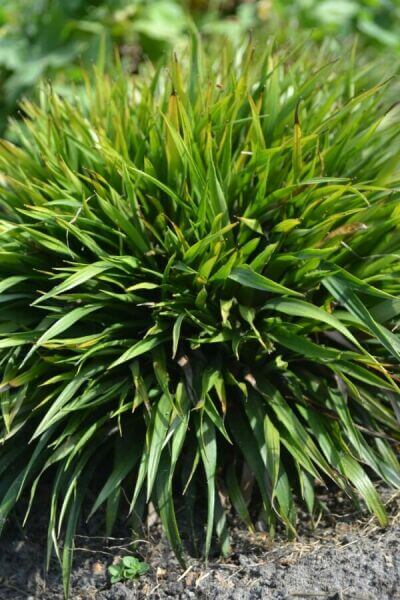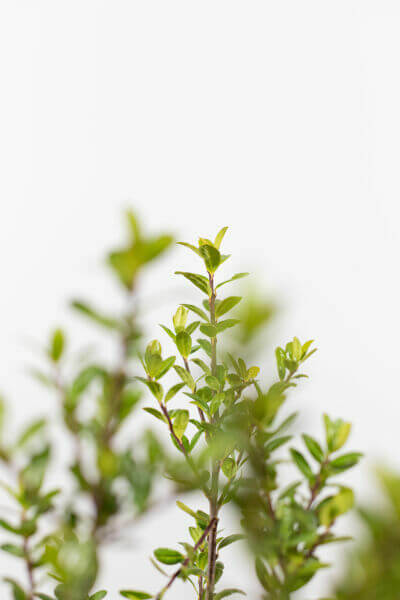Best Hedging Plants For Garden Layout
Boost your garden's attraction with lavish hedge ranges such as Yew (Taxus), Thuja, Laurel, Photinia, and Bamboo, celebrated for their structural stability and environmental advantages.
Yew and Thuja provide evergreen coverage and winter season durability, while Laurel provides rapid growth and broad, aromatic leaves.
Photinia adds seasonal appeal with its lively red foliage, and Bamboo lends a low-maintenance, peaceful atmosphere.
These hedges enhance air quality, reduce noise, and develop tranquil, personal areas.
Appropriate planting, spacing, and upkeep make sure vigorous growth and eco-friendly consistency.
Explore how these lush ranges can elevate your garden's appeal and wellness.
Key Takeaways
Transform Your Garden With Lush Hedge Varieties
- Select Yew for its dense, evergreen development and unequaled longevity.
- Choose Laurel for its fast growth and broad leaves, ensuring quick personal privacy.
- Choose Photinia for its lively seasonal foliage, which turns a striking dark red.
- Utilize Bamboo for a low-maintenance, winter-hardy hedge with visual appeal.
- Area plants 2-3 per meter and prune regularly for optimum growth and health.
Popular Hedge Plants
When transforming a garden with lush hedge varieties, it's important to think about popular hedge plants such as Yew, Thuja, Laurel, and Photinia due to their distinct attributes and benefits.
Yew (Taxus) is highly esteemed for its longevity and dense, green growth, making it a prime choice for enduring landscapes.
Thuja is noted for its evergreen foliage and robust winter resilience.
Photinia adds seasonal vibrancy with red leaves that darken over time, producing dynamic visual appeal.
Laurel provides fast development and aromatic, broad leaves, perfect for quick privacy.
In Addition, Bamboo is an outstanding choice for atmosphere, offering a low-maintenance, winter-hardy choice that enhances the garden's aesthetic with its sophisticated, swaying walking sticks.
These selections cater to a variety of horticultural requirements and preferences.
Advantages of Garden Hedges
Garden hedges offer a wide range of benefits, making them an important addition to any landscape. These natural barriers are cost-effective to execute and provide substantial wind security, enhancing air blood circulation and adding to noise decrease. The dense foliage of hedges like Thuja and Beech makes sure privacy by blocking exposure, creating a remote and serene environment.
Hedges likewise play a vital role in microclimate guideline, offering a stable environment that promotes plant development and lessens temperature level changes. Their detailed leaf structures filter contaminants, improving air quality and adding to a healthier garden environment.
Moreover, hedges master sound decrease, soaking up and deflecting acoustic waves to lower ambient sound levels. This dual functionality of supplying both visual and acoustic privacy boosts the total tranquility and aesthetic appeal of any garden.
Planting and Upkeep Tips
For an effective hedge, meticulous preparation of the planting location is essential. Guarantee the soil has correct pH and drain to support strong root advancement.
Area the plants appropriately for the picked types. Water the hedge frequently during its initial growth phase, adjusting as needed with seasonal changes.
Implement a methodical bug control and disease avoidance strategy, using natural or chemical treatments when required. Frequently inspect for aphids, mites, and fungal infections.
Apply mulch to retain wetness and suppress weeds. Seasonal pruning promotes dense development and air circulation, important for plant health.
Following these standards will assist you cultivate a vibrant, well-maintained hedge that improves the charm of your garden.
Spacing and Cutting Standards
Spacing and Cutting Standards
Correct spacing and cutting are crucial for cultivating healthy, visually appealing hedges. Adequate spacing ensures each plant receives sufficient nutrients, light, and airflow.
Follow these guidelines for optimum hedge upkeep:
- Spacing: Position hedge plants 2-3 plants per meter to encourage robust growth.
- Pruning Strategies: Routine pruning is essential for maintaining preferred hedge height and shape. Cut new growth in summer and cut back older wood during winter season.
- Seasonal Care: Change cutting techniques and schedules according to seasonal requirements to ensure plant health.
- Hedge Height: Regularly display and cut to preserve the preferred hedge height and achieve consistent looks.
Sticking to these steps will guarantee your hedge grows, improving both the appeal and functionality of your garden.
Choosing the Right Hedge
Choosing the Right Hedge
Picking the proper hedge involves evaluating aspects such as mature height, foliage density, and environmental strength. Successful hedge plant selection requires comprehending each types' growth characteristics and site-specific flexibility.
For example, Yew (Taxus) provides exceptional Additional reading longevity and thick development, while Thuja is notable for its winter season durability. Additionally, thinking about upkeep requirements is vital; fast-growing species like Laurel or Privet need routine trimming, whereas low-maintenance alternatives like Bamboo or Ivy may be preferable for those looking for very little maintenance.
Environmental aspects such as soil type, light accessibility, and wetness conditions need to also assist the selection procedure. This cautious approach guarantees the picked hedges will flourish, supplying both aesthetic and practical benefits to the garden landscape.
Shipment and Planting Suggestions
To guarantee your hedge plants thrive, they must be provided by specialized couriers and planted quickly upon arrival.
Follow these vital steps for effective planting:
- Soil Preparation: Enrich the soil with organic matter to enhance drainage and nutrient content.
- Planting Depth: Develop a trench two times the width and equivalent to the depth of the root ball.
- Watering Strategies: Water thoroughly after planting, keeping the soil regularly wet however not saturated.
- Mulching: Use a layer of mulch to retain wetness and reduce weeds.
Customer Support and Service
Offered the crucial role of timely support in horticultural pursuits, our client assistance group is readily available 6 days a week through telephone, email, and social media to offer professional guidance and swiftly deal with any concerns. Their devotion to quick action times ensures customer complete satisfaction by fixing inquiries connected to plant health, ideal planting techniques, and upkeep schedules.

Communication Technique
-------------------
Six days a week
This extensive assistance system, enhanced by a stellar 9.3/ 10 consumer rating, highlights our commitment to boosting the gardening experience for every client.
Frequently Asked Questions
The Length Of Time Does It Consider Hedge Plants to Develop?
Hedge plants usually need one to 3 years to end up being totally developed, with the specific period differing by species and growing conditions.
Efficient care during this crucial period is essential for robust growth. Constant watering, alert weed control, and proper fertilizer application are essential in promoting strong root advancement.
For example, fast-growing species like Laurel may develop more rapidly, while slower-growing ranges such as Yew might take longer. Diligent upkeep speeds up the facility process, resulting in thick and healthy hedges.
What Are the very best Hedge Plants for Privacy?
The question of the very best hedge plants for personal privacy involves evaluating evergreen and deciduous options.
Evergreen hedges like Thuja, Laurel, and Cypress supply year-round protection, ensuring continuous personal privacy.
In contrast, deciduous hedges such as Beech offer seasonal personal privacy, shedding leaves in chillier months.
Key upkeep ideas for privacy hedges consist of routine trimming, fertilizing in spring, and correct spacing-- usually 2 to 3 plants per meter.
Additionally, constant watering and thorough weed removal are crucial for promoting healthy, thick growth.
Can Hedge Plants Bring In Wildlife to My Garden?
Yes, hedge plants can draw in wildlife to your garden by providing necessary benefits like shelter, food, and nesting websites, thus boosting local biodiversity. For example, yew, holly, and laurel are outstanding for attracting birds, while ivy supports a range of insects.
However, it is essential to note that there are some disadvantages, such as increased maintenance to handle bugs and regular maintenance. Thoroughly selecting and keeping hedge varieties can help stabilize these benefits and downsides, eventually fostering a sustainable and lively ecosystem in your garden.
Exist Any Blooming Hedge Plants Available?
Yes, there are flowering hedge plants available that can enhance the appeal of your garden.
For example, Elaeagnus, also referred to as Olive Willow, produces aromatic white flowers in the fall, adding a touch of beauty.
Photinia, another popular option, showcases lively red leaves that grow into a rich green, creating a dynamic visual impact throughout the seasons.
To make sure these plants grow, it's essential to practice proper pruning methods and seasonal upkeep, such as cutting brand-new growth in the summer and cutting back in the winter.
These steps will help preserve the health and aesthetic appeal of your flowering hedges.
How Do I Prevent Insects in My Hedge Plants?
To prevent insects in hedge plants, utilize natural insect control techniques and preserve appropriate hedge care. Introduce advantageous bugs like ladybugs, which take advantage of damaging pests, to create a balanced ecosystem.
Regularly inspect your hedges for signs of problem and promptly get rid of any afflicted parts to avoid the spread. Guarantee the health of your hedges by applying balanced fertilizers and supplying appropriate water.
Make use of mulching to keep soil moisture and proper spacing to lower plant tension and promote robust development. These practices jointly assist in decreasing bug problems and maintaining a healthy hedge.
Conclusion
In essence, choosing the ideal hedge ranges such as Yew, Thuja, and Laurel can transform any garden into a tranquil sanctuary. These plants offer year-round greenery, boost aesthetic appeal, and offer useful benefits like sound decrease and wind protection.
Correct planting methods, precise spacing, constant watering, and seasonal cutting are crucial for optimum growth.
Dependable shipment services and skilled consumer support ensure a seamless experience from purchase to planting, making it simpler than ever to raise your outdoor space.
Garden hedges use a multitude of advantages, making them an important addition to any landscape. These natural barriers are cost-effective to execute and offer considerable wind defense, enhancing air blood circulation and contributing to noise decrease. The dense foliage of hedges like Thuja and Beech makes sure privacy by blocking visibility, producing a serene and remote environment.

Pruning Methods: Regular pruning is essential for keeping preferred hedge height and shape. Trim brand-new growth in summer and cut back older wood throughout winter.